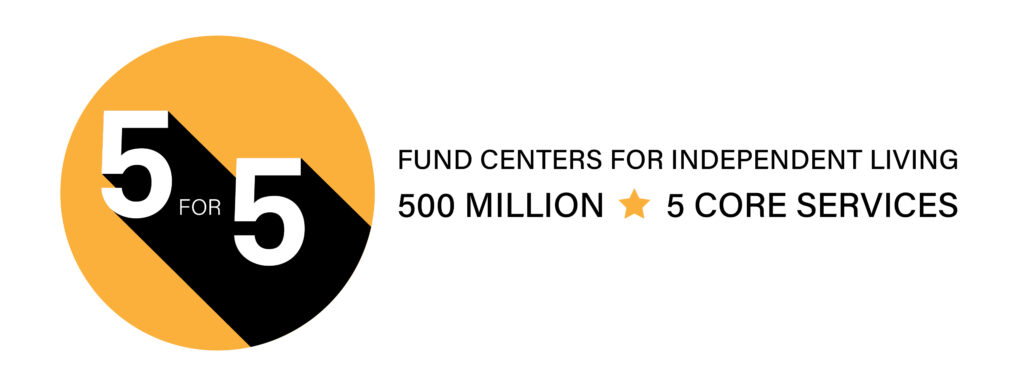- Independent Living in Action – PDF
- Independent Living in Action – plain text
- Independent Living in Action – audio
Centers for Independent Living provide holistic services that meet people with disabilities where they are and assist them during their journeys to achieve self-defined goals. These are their stories.
SHAYA
Shaya was living in a nursing facility for three years after a car accident resulted in a traumatic brain injury as well as a persistent mobility disability affecting her ability to walk. After rehabilitation, it was not considered safe for her to be discharged since her apartment was not accessible. Shaya needed an accessible apartment, some in-home care, and some assistive tools to help her live independently. The CIL provided assistance securing these supports.
It has now been more than six months since Shaya’s transition to the community and she is still living in her own home, her family providing support and happy that she can go out with friends whom she had not seen in years. CIL staff keep in touch with Shaya to make sure that she is still doing well and to offer assistance if needed to maintain her independence.
KENNY
Kenny, is a young man who returned to his own home a year ago after an amputation had trapped him in a nursing facility.
“I didn’t feel like I belonged there,” Kenny said about his time in the nursing facility. “I wanted to get out of there, but I didn’t know how I was going to live with my amputated leg. The CIL’s Peer Advocate told me about their struggles and what they did to deal with those challenges. It was helpful to tell them my story and brainstorm ideas of what I could do to feel more comfortable.”
Kenny reached out to the CIL at the beginning of 2023 and asked about becoming a Peer Advocate himself. The CIL encouraged him and believes that he will be an incredible help to others.
GG
GG was having difficulty advocating for himself effectively with his Managed Care Organization (MCO) and his service coordinator. He had been without appropriate transportation because of his need for a gurney and his service coordinator was not returning calls. The CIL Advocate used her resources with the MCO and held a 3-way call to demonstrate an example of using effective communication for GG to self-advocate. He now independently advocates for appropriate transportation at the MCO advisory meetings and other state MCO meetings.
SAM
Sam, who is autistic and a member of the CIL’s grassroots advocacy group, Wheels in Motion (WIM), achieved her goal of obtaining a part time job. She had learned and practiced self-advocacy and group advocacy skills as part of WIM. She was recruited by the national advocacy group Self Advocates United as One to be a trained, paid self-advocate.
NICOLE
Nicole had just finished her bachelor’s degree and begun working when her local Vocational Rehabilitation office closed suddenly. After being transferred to another office, Nicole was faced with a new case worker determined to undermine her goal of pursuing a master’s degree. She turned to her CIL for help advocating for the services she needed to continue her education.
Nicole completed her masters in six months with honors and credits the accommodations that resulted from successful advocacy.
Vocational Rehabilitation continued denying Nicole assistance to create a business plan. Over the course of that year, Nicole wrote and published four books and did a TEDx talk (http://bit.ly/3YkubUG), among other noteworthy accomplishments. Nicole then joined her state’s Statewide Independent Living Council, where she was perfectly positioned to ask tough questions of the Vocational Rehabilitation agency.
Her CIL staff advocate, Cathy, was there through it all. “She encourages me and keeps reminding what I have done and how hard I have worked; that it will happen. Cathy is a big factor in the success in my life. If all people with disabilities had access to CIL services, it would heal a lot of disability issues and give individuals the support they need.”
DESTINEY
Destiney is a 23-year-old woman with multiple disabilities. She had been fighting with her half-sister to maintain custody of her 3-year old son. The half-sister was threatening that DHS would take her son away from her if she did not let her half-sister have him. Destiney felt it was because her family did not think she could care for her son because she was disabled.
The CIL advocated for Destiney through her court proceedings regarding her rights as a parent and ability to care for her son.
Destiney successfully maintained custody of her son, who lives with her in their new home. She makes her own choices and lives independently with services in place. She now has opportunities and the freedom to socialize within her community as much as she likes!
Questions: contact Jessica Podesva at [email protected]

